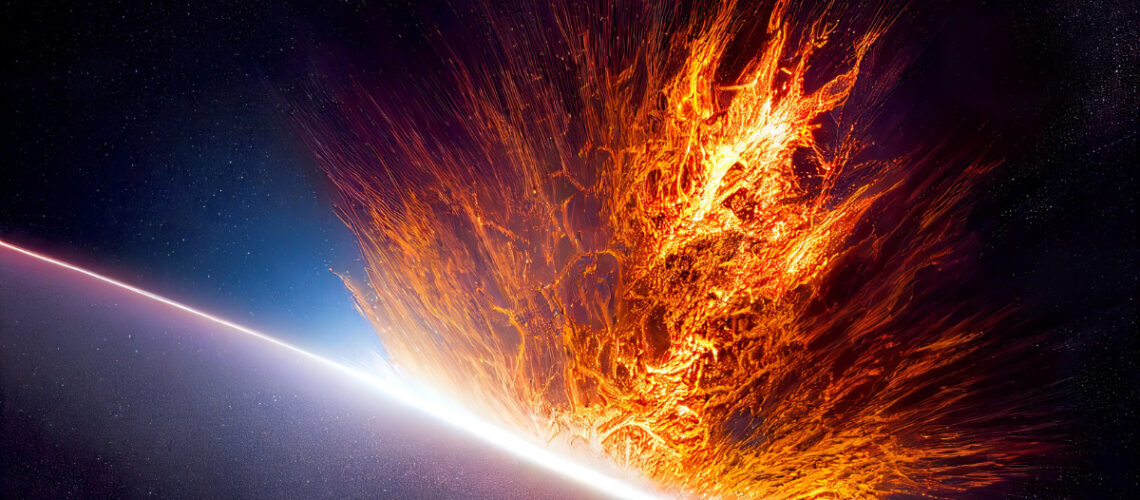In a world driven by innovation and technological advancements, the interplay between artificial intelligence (AI) and art has emerged as a captivating and transformative intersection. Artists, technologists, and enthusiasts are increasingly exploring the remarkable ways in which AI is reshaping the landscape of creativity. This blog post delves into the profound relationship between AI and art, unraveling the diverse facets of this synergy.
AI Art: A Contemporary Renaissance
The convergence of AI and art signals a contemporary renaissance where traditional artistic expression marries cutting-edge technology. As artists wield AI as a new medium for their creations, the canvas of possibilities expands exponentially. Whether through the lens of visual art, music, literature, or even dance, AI is revolutionizing the creative process.
AI tools like neural networks and machine learning algorithms have made it possible for artists to experiment with entirely new forms of artistic expression. The concept of AI-generated art challenges conventional boundaries, enabling artists to break free from the constraints of human creativity. This newfound creative dimension raises intriguing questions about the essence of art itself, as well as the roles of human artists and their AI counterparts.
AI and Generative Art: The Creative Duo
Generative art is a prime example of how AI has found its footing in the realm of creativity. By using algorithms, neural networks, and large datasets, artists can instruct AI to generate art autonomously. These creations, often characterized by their abstract, surreal, or even futuristic nature, offer a glimpse into the infinite possibilities of AI’s creative potential.
One of the most renowned AI artists is the ‘Portrait of Edmond de Belamy,’ created by the Paris-based art collective Obvious. The portrait, which resembles a blurry aristocratic figure from a bygone era, serves as a testament to the unique fusion of human ingenuity and AI algorithms. Such works challenge the notion of authorship and blur the lines between the artist and the AI program.
Augmented Creativity: AI as an Artistic Tool
AI art doesn’t merely replace traditional artistic methods; it augments them. Artists can utilize AI as a creative tool, enhancing their work rather than delegating the creative process entirely to machines. For instance, AI-powered software can assist painters in generating intricate patterns, suggesting color palettes, or even providing style recommendations.
This symbiotic relationship between artists and AI, rather than a competition, fosters a harmonious collaboration that leads to captivating results. The artist retains control while enjoying the benefits of AI’s computational prowess, which can process vast amounts of data and suggest innovative ideas.
AI Music Composition: The Symphony of Code and Creativity
Music, as a universal language, has also succumbed to the allure of AI. Composers and musicians now have access to AI tools capable of generating harmonious compositions, helping them discover new melodies, chord progressions, and rhythms. AI-driven music generation presents artists with fresh avenues for exploration and innovation.
Companies like OpenAI have introduced AI models, such as MuseNet, which can compose music across various genres and styles. By providing musical parameters and preferences, artists can collaborate with AI to produce pieces that push the boundaries of their own creativity. This dynamic partnership expands the horizons of what is musically possible, inviting a deeper appreciation of the fusion between human artistry and AI computation.
AI in Literature: Redefining the Writing Process
The world of literature has also seen the emergence of AI-generated content. Writers can now utilize AI as a tool for generating ideas, suggesting plot twists, or even co-authoring works. The introduction of AI to the literary landscape sparks discussions about originality, creativity, and the human touch that breathes life into storytelling.
AI-driven language models, like GPT-3, can craft compelling narratives, generate poetry, and assist in content creation. Authors can work in tandem with these models, harnessing AI to overcome writer’s block, fine-tune their prose, or explore unconventional narrative structures. While AI may be the co-pilot, it is the human author who maintains creative control and ultimately shapes the story’s direction.
AI in Dance: Choreographing the Future
Even the world of dance, where human expression reigns supreme, has not been immune to the influence of AI. Choreographers are experimenting with AI-driven tools to create innovative, mesmerizing routines that push the boundaries of physicality and creativity. AI can analyze movement data, suggest choreographic patterns, and explore new forms of expression that challenge conventional norms.
Companies like NVIDIA have developed AI models that can generate lifelike character animations, offering new possibilities for animators and choreographers. The result is a fusion of human emotion and AI precision, producing dance routines that captivate audiences with their seamless integration of artistry and technology.
The synergy between AI and art has given rise to a new era of creative exploration. Artists are using AI both as a medium for expression and as a tool to enhance their creative process. This contemporary renaissance challenges traditional notions of authorship and creativity, emphasizing collaboration rather than competition between humans and AI.
Whether in visual art, music, literature, or dance, AI is transforming the boundaries of what is creatively possible, inviting us to explore the infinite frontiers of imagination and innovation. As this partnership between human ingenuity and artificial intelligence continues to evolve, it opens new doors to artistic expression and creative endeavors that promise to redefine the very essence of art itself. The future of AI in art is boundless, limited only by the depth of human imagination.

